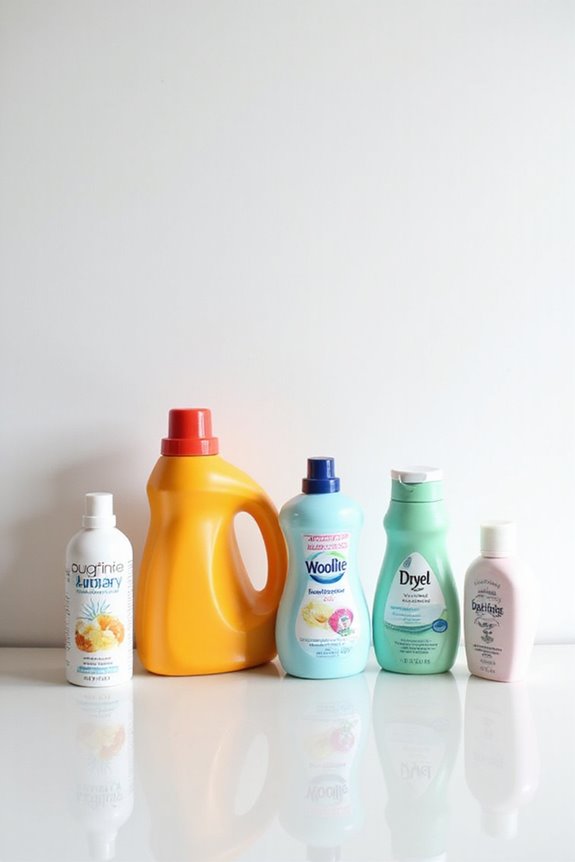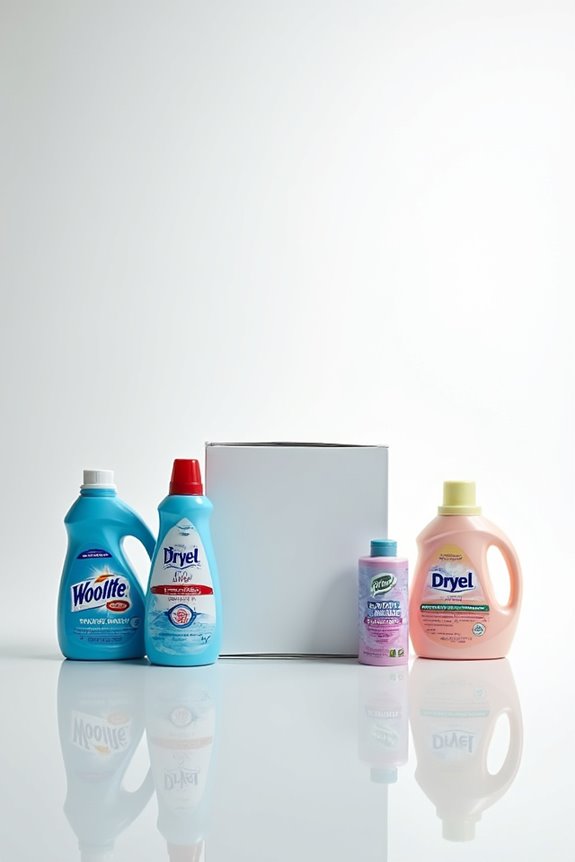To read laundry symbol tags, we should start by breaking down the symbols. Each symbol tells us how to wash, dry, or iron our clothes. For instance, a washtub symbol gives us washing instructions, while a triangle indicates bleach usage. If there’s a crossed-out icon, it’s a red flag! Following these symbols prevents wardrobe disasters. Trust me, I’ve learned the hard way! Stick with us to discover more tips for keeping our clothes in top shape.
Key Takeaways
- Look for the washtub symbol to determine the washing method and appropriate water temperature for your garment.
- Check for bleaching symbols to understand if bleach is safe, and what type can be used.
- Identify drying symbols to know if tumble drying is allowed and at what heat level.
- Use the iron icon to see if ironing is permitted and the recommended heat setting for the fabric.
- Refer to dry cleaning symbols to understand if the item requires dry cleaning and any specific solvent precautions.
Understanding Washing Symbols
When we plunge into the world of laundry symbols, it can feel a bit like decoding a secret language. Understanding washing symbols is essential for caring for our clothes properly. The washtub symbol, for instance, tells us how to wash our garments. If we see dots inside the tub, they indicate safe water temperatures—one for cold, two for warm, and three for hot. A single line under the tub means we should reduce agitation, while double lines signal a very delicate cycle. If we spot a crossed-out tub, it’s a dry-clean-only warning. By keeping these laundry symbol meanings in mind, we can follow fabric care instructions, ensuring our favorite clothes stay looking fresh and new!
Decoding Bleaching Symbols
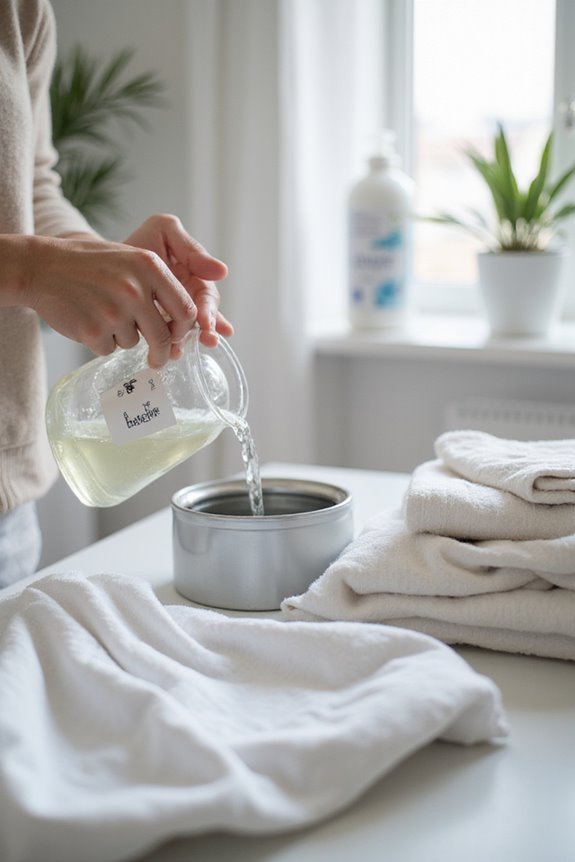
Decoding bleaching symbols can feel like a scavenger hunt for laundry lovers! We’ve got three main symbols to watch for. An empty triangle means any bleach is safe, while a triangle with two diagonal lines tells us to use only non-chlorine bleach. The solid triangle with an X? That’s a hard no on bleach—using it could ruin our favorite clothes!
Interpreting Drying Symbols
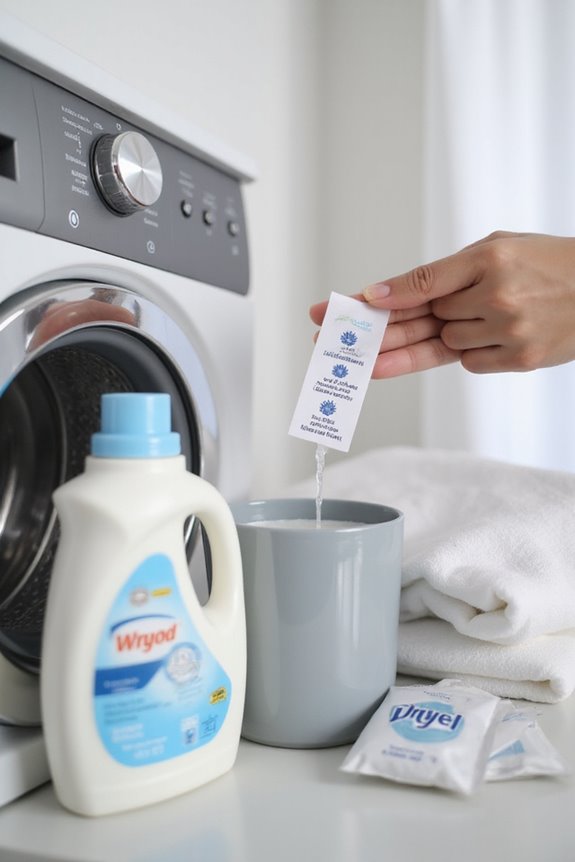
Understanding drying symbols can make a huge difference in how we care for our clothes. These symbols guide us in choosing the right drying methods for each garment. For instance, a square with a circle means we can tumble dry, while a crossed-out circle warns us to avoid it altogether. If we see lines inside the square, they tell us whether to air dry or lay flat.
When it comes to temperature settings, those black dots inside the circle indicate heat levels. One dot for low, two for medium, and three for high. Following these symbols helps us prevent shrinkage and keeps our clothes looking great. So, let’s pay attention to these symbols and keep our wardrobe in top shape!
Analyzing Ironing Symbols
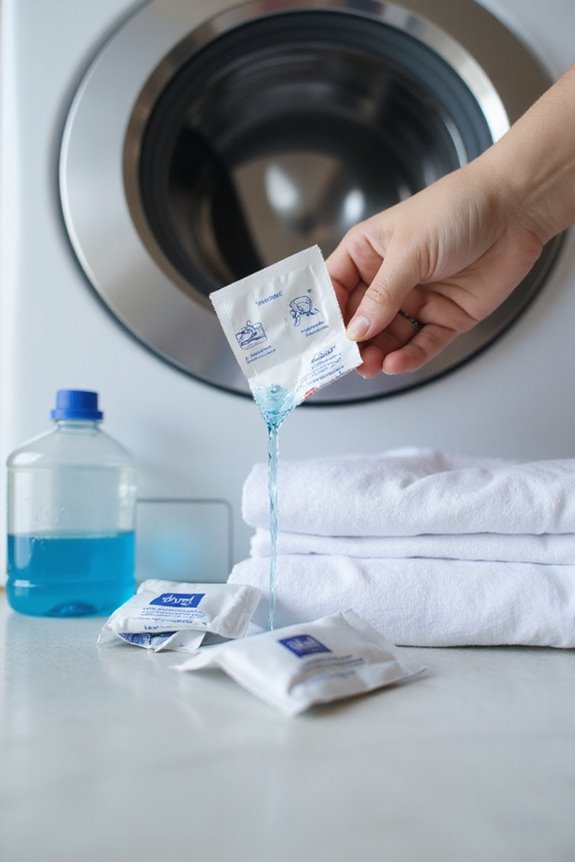
Ironing symbols can seem a bit confusing at first, but they’re actually quite helpful once we get the hang of them. We see an iron icon that usually means the fabric is safe to iron, but if it’s crossed out, we should steer clear. The dots inside the iron tell us about heat levels—one dot for low heat, two for medium, and three for high. Understanding these symbols guarantees fabric compatibility and protects our clothes. For instance, if we try ironing silk at high heat, we might end up with a ruined shirt. So, let’s start low and test if we’re unsure. Remember, a little caution goes a long way in keeping our garments looking fresh!
Recognizing Dry Cleaning Symbols
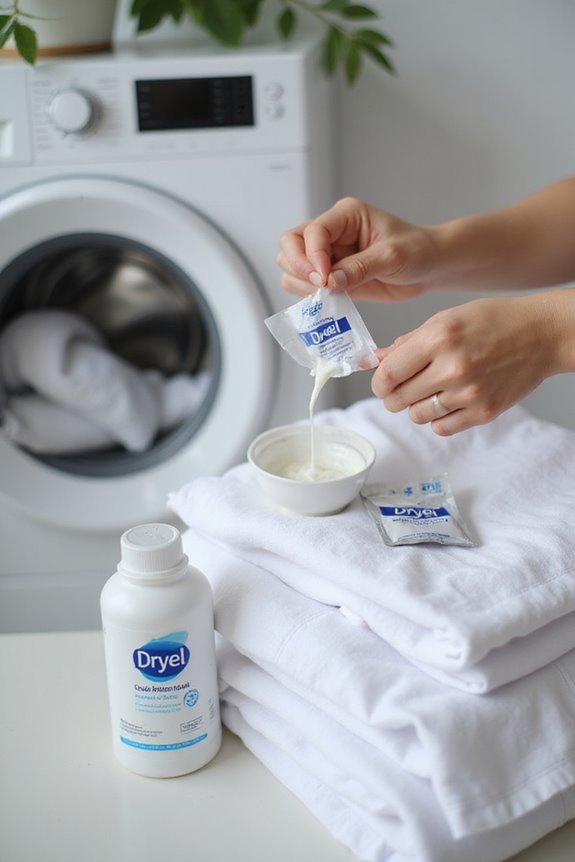
When we look at the care labels on our clothes, dry cleaning symbols can sometimes feel like a secret code. A plain circle tells us the item must be dry cleaned, while letters inside indicate the solvent types. For example, “A” means any solvent is okay, “P” warns against trichloroethylene, and “F” limits it to petroleum-based solvents. If there’s a circle with an “X” over it, that means no dry cleaning at all! We should also watch for the number of bars below the circle; they show how cautious the dry cleaner needs to be. Following these symbols helps us avoid wardrobe disasters, like shrinking our favorite sweater or fading that stunning dress. Let’s decode those labels together!
Importance of Care Labeling
Care labeling is more than just a small tag stitched into our clothes; it’s like a roadmap for keeping our favorite outfits looking great. When we buy clothes, 67% of us check those care labels, and 82% rely on them during laundry time. Yet, we often forget about them after a few washes. This is where consumer awareness and label literacy come into play. Many of us struggle to comprehend revised symbols, which can lead to mishaps in washing. Clear labeling and educational campaigns can bridge this gap, helping us take better care of our garments. When we grasp the labels, we not only preserve our clothes but also extend their lifespan—who doesn’t want that? Let’s become label-savvy together!
Common Misinterpretations
We’ve all been there—standing in front of our washing machine, staring at the care label, and wondering what on earth those symbols actually mean. One common misconception myths is that these symbols are universal, but they can vary by region. We might think we can ignore them, but skipping symbols can lead to damaged clothes. Not every symbol applies to all fabrics, and it’s important to know that each has specific significance. For example, washing symbols aren’t just about the wash cycle; they also include drying and ironing instructions. Misinterpreting these can shrink our favorite shirt or ruin its color. So, let’s pay attention to those little symbols—they’re there to help, not confuse!
Tips for Proper Care of Fabrics
Taking care of our fabrics isn’t just about tossing clothes into the wash and hoping for the best. We need to pay attention to fabric types and laundry sorting. First, let’s remember to sort our laundry by fabric type. Delicates like silk need gentle cycles, while heavier items like denim require a robust wash. It’s all about keeping our clothes in good shape!
When washing, always check those care labels; they guide us on temperature and drying methods. Using low heat is often best for synthetics to prevent pilling. And don’t forget about ironing! Some fabrics can’t handle the heat, and we definitely don’t want to turn our favorite shirt into a pancake. Let’s keep our clothes looking fresh! Additionally, using gentle detergents formulated for delicate fabrics can further help maintain the quality and longevity of your silk garments.
Frequently Asked Questions
Are Laundry Symbols the Same Worldwide?
While laundry symbols generally follow international standards, we’ve noticed global variations. Different countries may use unique designs or additional instructions, so it’s essential for us to familiarize ourselves with these differences to care for our clothes properly.
What if the Care Label Is Missing?
When care labels vanish like whispers in the wind, we can turn to fabric identification and alternative methods. By touch, look, and even expert advice, we’ll keep our garments safe and sound.
Can I Ignore Laundry Symbols for Durable Fabrics?
Ignoring symbols for durable fabrics isn’t advisable. While they’re tough, proper care maintains fabric durability. Let’s follow the care instructions to avoid damaging our favorite items and guarantee they last longer and look great.
How Can I Test Fabric Care Before Washing?
To test fabric care before washing, we can conduct fabric testing by creating swatches, applying various care methods, and observing changes. This helps us guarantee the fabric meets our expectations for durability and appearance.
Do Laundry Symbols Apply to All Clothing Items?
Don’t we all wonder if laundry symbols apply to all clothing items? While most do, some garments might lack complete care labels or unique symbols, making it essential for us to stay informed and cautious.

